My experience at YouthLink is that it’s an amazing place and a safe place with a lot of resources. You get a good hot meal, warm environment, and they have an amazing clothing closet. There is an awesome staff and great volunteers
Homeless Youth
May 31, 2013
Youth homelessness doesn’t look like adult homelessness. Kids don’t panhandle on the highway, they don’t sit on cardboard boxes on the sidewalk, they don’t sleep every night in a shelter packed in side-by-side beds. They “couch-hop” from a friend’s house to their relatives’ to another friend and back again, never overstaying their welcome. Most continue to attend school or hold jobs, constantly worrying about where they will go when the library closes and where their next meal will come from.
Youth homelessness is hidden––hidden in coffee shops and libraries, disguised as couch stays at grandparents’ houses or with a friend, concealed by a night spent riding the bus or a night spent in the heated bathroom at a construction site. The issue lurks in schools and universities, rarely exposed to receive the aid it needs.
Homelessness involves much more than the lack of a building to sleep in. It also, much more importantly, involves the absence of a sense of belonging, of a loving community, of supporting adults. Most homeless teens experience homelessness because there is no one capable enough to care for them. Teens are hurt not only by the cold Minnesota winters, but are also emotionally injured by the feeling of rejection, of not belonging.
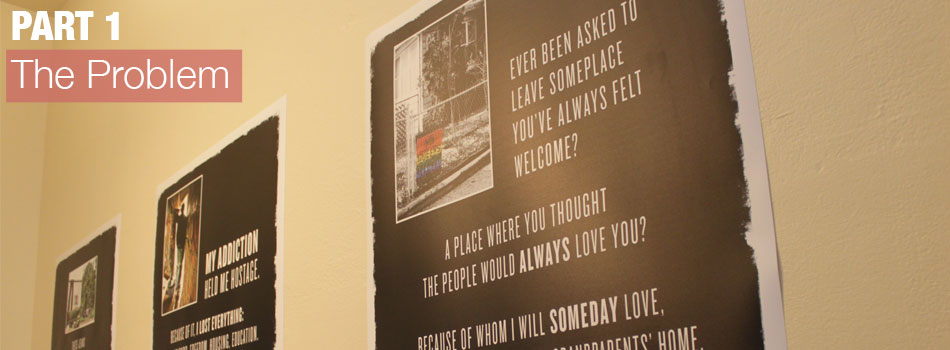
Part 1: Homeless Youth
Most homeless youth make extremely adult and mature decisions to leave a dangerous situation. They don’t run away from home to evade responsibility or dodge parents’ rules. They instead confront situations that are either a present or future source of danger. “Most of the time when youth become homeless, it’s because they have to make a very mature decision to be the parent at that given time, or sometimes they just get tired of being the parent,” Corey said.
Often when people hear about homeless youth, they immediately place blame on the parents, not conceiving any possible reason why this child should be homeless. Kristan Clow is the Outreach Manager at The Bridge for Youth in South Minneapolis, and, she herself used to be homeless. “I think people are almost ignorant to it like, ‘Where’s their parents? Isn’t it their parents’ responsibility?’” Clow said.
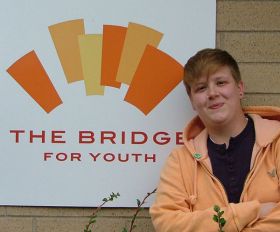
Homelessness, especially with youth, often results from the cycle of poverty, depriving young people of poor backgrounds of the resources and support systems required for them to succeed. Kristan Clow was a victim of this cycle, but was able to rise above it. “Homelessness and poverty, it’s in my family, growing up it was just something that affected me and impacted me, and when I came out as LGBT identified I had a lot of issues, and my father had kicked me out of the house, and I then experienced homelessness,” Clow said.
Clow did not only surface from this cycle, but rose far above it. Recognized by the White House as a Next Generation LGBT Leader for her work with young people, Clow has already achieved great success in her life helping youth. Despite her experiences with homelessness, Clow rarely uses her personal story in her work, and instead recognizes that each youth’s experience is vastly different. “I don’t know their experience, our life experiences are very unique…I will use my story to dispel myth more than ‘I know where you’ve come from,’ because I don’t necessarily know,” Clow said.
Clow touches on a very important aspect of youth homelessness: each person’s story is vastly different––every teen comes from a different background, has endured different hardship, possesses different coping abilities. Due to this, there are a variety of reasons that youth become homeless. One especially common cause is that young women were sexually abused at home and made the decision to leave.
Corey, who now supports teens at YouthLink drop in center in Minneapolis, used to be supported there herself. She provides insight into the trying pasts of many homeless youth. “For young single mothers, there can be too many mouths to feed, which leads to verbal abuse and neglect, so the oldest children choose to leave,” Corey said. At times parents have chemical abuse problems or choose to have relationships with people who force the teens to leave. Another reason that teens become homeless is when they phase out of the foster care system upon turning 18.
Corey began experiencing homelessness during her last few months of high school when it became too difficult to support herself and her mom at home. “With me and my mother it was a lot, she was dealing with a lot of skeletons that were coming back into her life and it became me supporting the both of us instead of her supporting the both of us. It became overwhelming physically, financially, and emotionally, and it just wasn’t safe,” Corey said.

Homeless teens don’t wander the streets pushing a cart with their belongings, instead they’re in school, and they have jobs. “You could go into a high school and you wouldn’t be able to identify who’s homeless and who’s not, they look exactly the same and have the same struggles…they just don’t have a place to go at night,” Eric Richert, a case manager at Hope Street Emergency Shelter in Minneapolis, said.
The challenges of youth homelessness differ so greatly from those of adult homelessness, as homeless youth become incredibly vulnerable in their situations. “They’re vulnerable to things like sex trafficking and prostitution because they’re out on their own and don’t have a place to stay. A lot of times what’s offered to them is a place to stay if they give up something that they have, so a lot of times that’s their body,” Richert said.
The emotional, physical, and psychological vulnerability of youth experiencing homelessness can lead to situations like these that put the youth in danger of even more harm. The Minnesota state legislature recognizes the tragedy not only for the teens but for the entire community. “When it gets dark, everyone is your enemy. Even if you find a place to lie down you can’t close your eyes just in case,” said Allison Wesley, a formerly homeless teen who spoke during a hearing at the state Capitol on April 5.
The vulnerability of youth to crime, trafficking, and other dangers is not the only difference that sets homeless youth apart. Usually youth make the transition to adulthood under the guidance of many adults––parents, counselors, teachers, relatives, coaches––but homeless teens are placed at a great disadvantage because most lack this bridge into adulthood. “Young people are still at a really significant point in emotional development and brain development; we can’t lump kids in with homeless adults,” State Representative and author of the Homeless Youth Act, Laurie Halverson said.
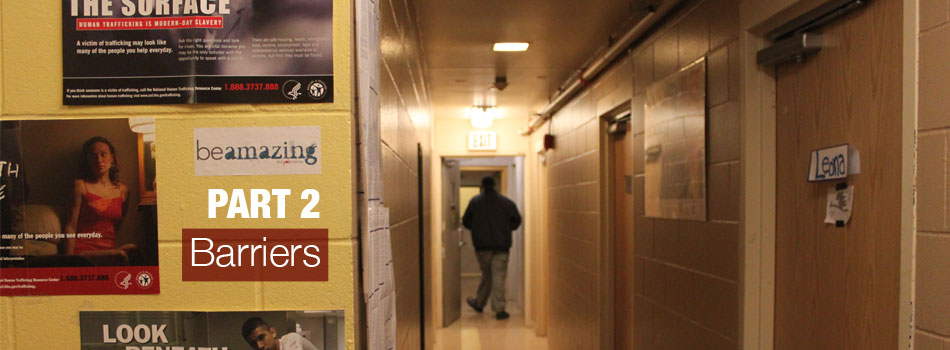
Part 2: Homeless Youth
One of the major barriers in the recovery of homeless youth is overcoming the emotional and psychological stress. “Homelessness is a very personal issue, sometimes you get a lot of people who don’t really like to talk about it, and I feel like that’s what you need to do to release all of it,” Corey said.
Teens often experience homelessness because someone––or multiple people––let them down. They’re not lazy, nor are they rule-breakers. Instead, they were rejected, they were abused, they didn’t receive the love that all children deserve. It takes time to be able to accept these traumatic experiences and effort to get past the deep emotions that accompany them. “One of the things I hear most from kids is just a deep sadness around feeling rejected, they have to overcome it. All we can be is consistent and be here and listen, and they can cuss us out and we’re not going to treat them any differently,” Clow said.
Homeless youth often feel worthless and deserted, rejected and hopeless. These youth need, require, demand, adults to support them. They need someone, as Clow says, “to plant seeds.” Four words said by Clow’s fifth grade teacher still have an impact on her today. Her teacher said, “Stand up straight, Kristan.” Giving kids this sense of confidence can mean the world of difference in their lives as they move past traumatic events and painful emotions caused by their adverse situations in life.
Yet another challenge that homeless youth face is finding the precarious balance among finishing their education, holding a steady job, finding a place to sleep at night, and figuring out where to get their next meal. It is nearly impossible for youth to do this, so often times, education becomes neglected first, as it is the least required for immediate survival.
An especially challenging hurdle for many homeless teens is that one cannot get a GED until age 19. If a teen misses too much school to catch up or re-enroll, they essentially remain in limbo until they are old enough to study for their GED. Not only can they not earn their degree until this point, but it also becomes increasingly difficult for these teens to get a job or housing without any proof of education.
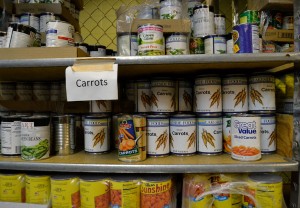
Even when homeless teens do stay in school, they struggle to keep up with classmates. “Some of these young kids are in so much crisis at home that they’re coming to school and they’re not prepared to learn,” Clow said. A teen who rides the bus all night to stay warm can’t compete on a test with a student who studies all night at a dining room table and then sleeps eight hours in a warm bed. A student who worries about finding his next meal could not do 50 math problems as well as one who can snack from their fridge all night. “It’s very hard to study for hours when you’re stressing about how you’re going to eat, where you’re going to go after this because the library closes at such and such time,” Corey said.
Most often, people assume homeless youth are no-good runaways. This misconceived vision of homeless youth hurts them not only psychologically, but also affects their chance at success. “I think the biggest challenge that I faced was the perceptions and misconceptions that people had made of me, that since I was a youth that there should be no reason that I was homeless, and I feel like that’s very hard for the youth because we get a lot of blockers in the process that should be so easy,” Corey said.
Because this image of youth homelessness is so different from adult homelessness, the classification of “homeless teens” can be blurry. “A lot of teenagers don’t call themselves homeless, instead they are ‘couch hopping’ or ‘highly mobile,’” Clow said.
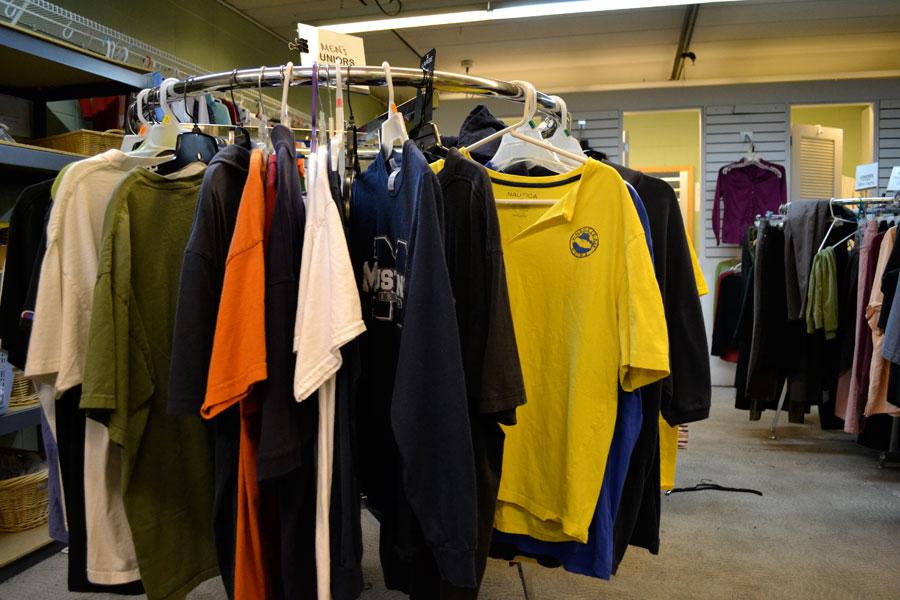
These precariously housed teens jump from house to house to keep their situations from becoming a burden on anyone, often contributing to the household with food from food shelves. Another challenge for these teens that stay in school is finding clean clothes, so that their classmates won’t know they’re homeless.
Most kids at shelters or in programs across the metro are there to make a difference in their lives. “It’s so eye opening to realize that these are just kids who were in the wrong circumstances and there are no differences between these children and my own children except that they had some bad luck,” Krista Siddiqui said. Siddiqui is the Fund Development Coordinator at YouthLink in downtown Minneapolis.
The stigma not only affects the image of the teens, but also affects their willingness to to get help. “They don’t want to tell people that they’re homeless, that they don’t have a safe place to stay, they don’t want to be picked on in school, they really don’t want their classmates to even know that it’s going on in their life,” Jenny Lock, head of the Suburban Host Home Program said. Teens who feel embarrassed about their situation are far less likely to reach out and receive help, which can only limit their recovery.
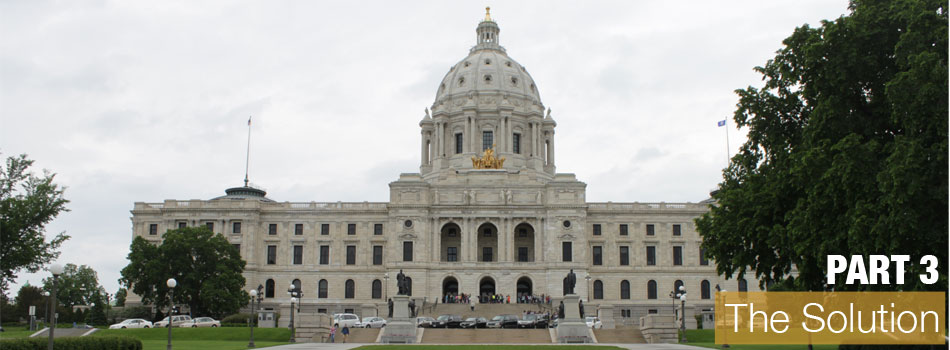
Part 3: Homeless Youth
Putting homeless teens on beds for the night packed hundreds in a large room just doesn’t work. “You can’t put the same Band-Aid on the homeless youth that you can on the adults who are homeless,” Krista Siddiqui said.
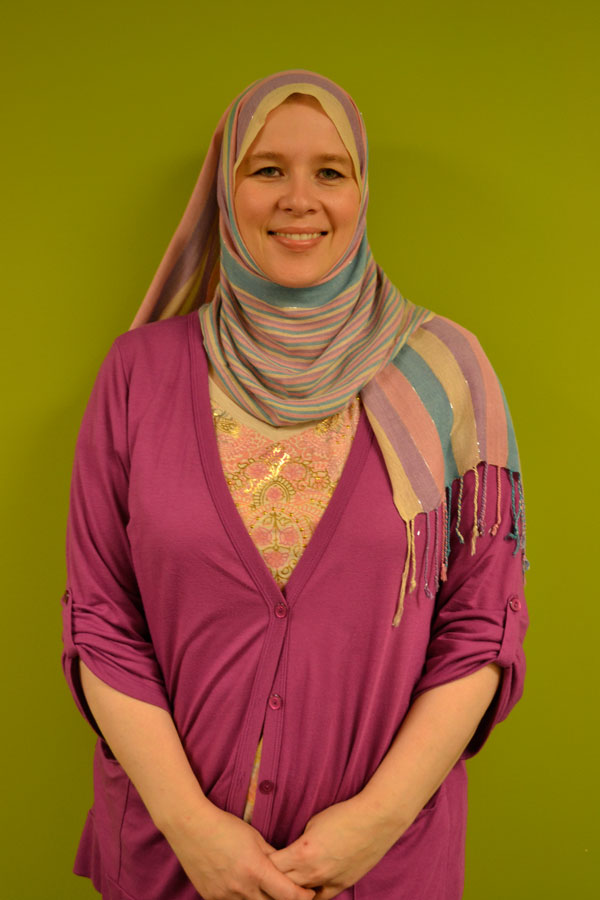
Because of the stage of life the youth are in, they require different and additional resources than their adult counterparts. Youth need education and help finding jobs, they need to learn how to live on their own, they need supportive adults to guide each of them on a unique path to emotional recovery.
Homeless youth have dreams and aspirations similar to others their age. The only difference lies in the resources available for them to attain these goals. “A lot of people may think of homeless youth as a hopeless demographic, I really challenge them to come here to YouthLink and meet some of the kids,” Siddiqui said.

Tim Marx, the CEO of Catholic Charities, works in conjunction with state legislators to provide aid for Minnesota’s homeless youth programs. Though each program approaches the precarious situation of youth homelessness uniquely, an overarching theme ties them together: upstream prevention. “If you can prevent a problem before it occurs, it’s a lot less expensive to fix and a lot less damage or harm occurs to the young person as well,” Tim Marx, the CEO of Catholic Charities, said.
Laurie Halverson, state legislator from Eagan, MN, uses her position in state government to help these children get the funding they need with the Homeless Youth Act. The bill, initially passed in 2006, was rewritten this past year by Halverson to redefine the recipients of the aid and to increase the funds allocated to the bill, which asked for $8 million. “Studies show that an $8 million investment would essentially solve our homeless youth problem in Minnesota,” Halverson said.

And an investment it would truly be. Many don’t fully understand the cost that homeless youth have on society and on the pocket of the taxpayer. If a teen drops out of high school, it is estimated that there is a cost of around $750,000 in resources that get spent on them, including the welfare programs that they will inevitably be a part of.
The cost to society is not only fiscal, but it is also detrimental to the general well-being and success of a community. “Not only are [the teens] put at severe risk, but the consequences for the entire community for not having those talents long term of young people to benefit our community are really bad and tragic,” Marx said.
Marx worked in partnership with Halverson on the bill, as he was previously in state government. “What has never really happened has been adequate funding for the Homeless Youth Act,” Marx said, speaking on the bill’s initial passing. The adequate funding needs to include money for services beyond only beds to sleep in. “For youth services you really want to give youth the chance to be successful; this means having a computer lab and services to help them move on to their next step,” Lock said.
In its 2006 version, the Homeless Youth Act was referred to the Runaway and Homeless Youth Act. Though seemingly insignificant, the name change alters the assumptions made about the youth receiving aid from this bill. “[The word runaway] implies that there’s a choice in not having a place to live, it implies that there’s a choice in not having supportive adults around you, and kids aren’t choosing that,” Halverson said.
The Homeless Youth Act was allocated $4.238 million in the Health and Human Services omnibus bill for the budget years of 2014 and 2015. This is 17.8 times the current funding.
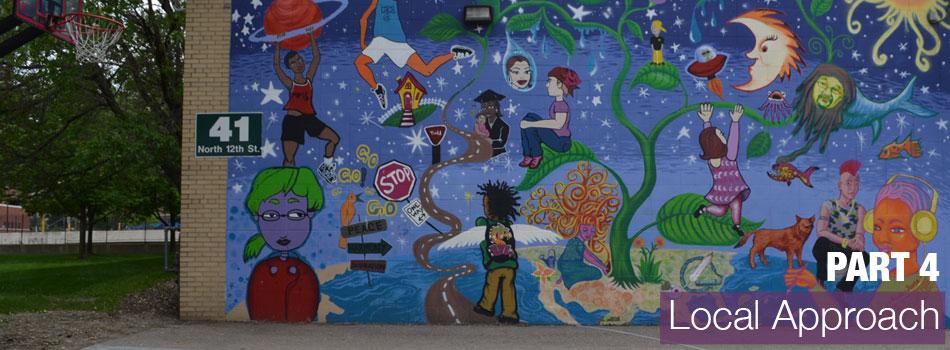
Part 4: Homeless Youth
“One of the greatest threats to our civilized society is that we accept homelessness as inevitable,” said Christine Martin, the Vice President of the Wilder Foundation. These four organizations choose to not accept that inevitability. The Bridge, the Suburban Host Home Program, YouthLink, and Hope Street, all located in the Metro area, take substantial steps to aid Minnesota’s homeless youth population.
The Bridge in South Minneapolis blends in with the apartment buildings found right off Hennepin Avenue, but blocks away, mansions dot Lake of the Isles Parkway. This contrast creates a stark real-life image of the somewhat overused phrase: “the problems in our own backyard.”
The Bridge operates under a family reunification model, in which incoming teens meet with family members and guardians soon upon arrival in an attempt to place the child back in the home. Under this model, those who care about the youth have an active role in the future of the child. “We use a strength-based approach, the family has the tools to fix their situation, the family is the best environment for this child to grow up in,” Clow said.
Clow knows that often for single parents without the support of their own parents, sisters, or brothers, raising a teen can be overwhelming. “As a community in the state of Minnesota, [it would help] if we were to acknowledge a little bit that it takes a village…I think intervention and prevention is the way to ending cycles of homelessness,” Clow said. The cycles Clow mentions are clearly proved as there are many kids at The Bridge whose parents also frequented as teenagers.
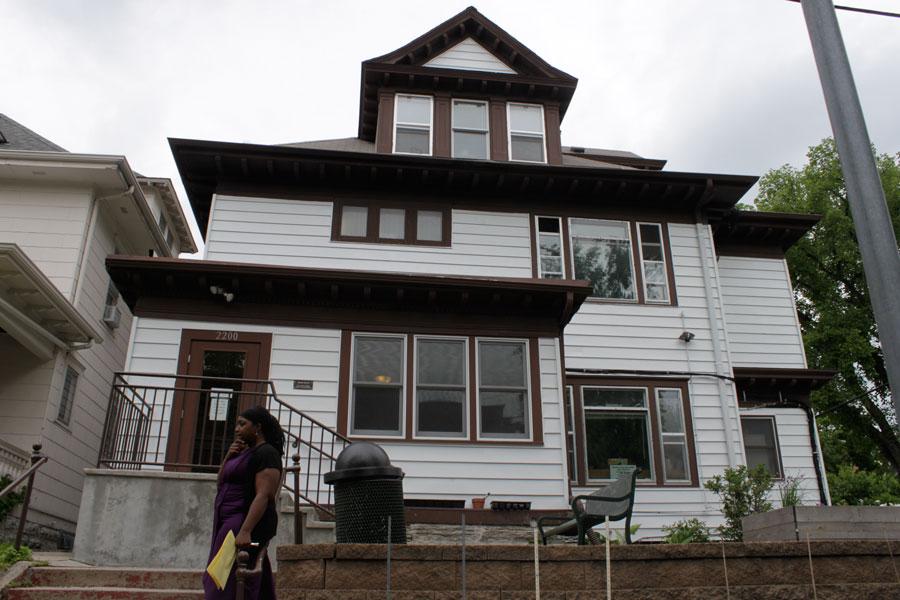
At The Bridge, the shelter in a house across the street provides the primary programming as “the beehive” of the organization. When a teen shows up at The Bridge, an extensive assessment is done to best meet his or her needs. “The whole program is based on assessing client needs, what are the client’s needs around health and emotional well-being,” Clow said.
Clow, however, does recognize the complexity of the issue. “Have you ever seen Shrek? Well it’s like an onion; it’s such a layered thing,” Clow said. These layers include poverty, mental health and chemical health issues, privilege, diversity, LGBT identification, and that merely scratches the surface.
Organizations can only aid teens to a certain point; from there, the teens must overcome the mental scars on their own, find their own motivation, and work to accomplish their own dreams. The Bridge works to provide resources and support, but in the end, the driving force comes from each teen. “I don’t think we give kids anything; we help them find strength within themselves,” Clow.
For some, integration into a sort of foster home is the best solution. Jenny Lock is the coordinator for the Suburban Host Home Program, which is one of the only housing programs for youth in the suburbs. “The point is that those youth are still able to stay at their same job and school, and near their network of support,” Lock said.
Homeless teens in the suburbs face an additional set of challenges. Transportation and access to resources are harder to come by, and due to this, many homeless teens in the suburbs are forced to move to the city to get housing. In doing this, they must leave behind friends at school, their support system, everything familiar to them. The Suburban Host Home program aims to help suburban teens remain connected with their social groups and support systems and to also stay in a home environment.
Though the program has only housed a few teens so far, success already is apparent. One teen in a host home in Brooklyn Center has been with her host for 14 months, has graduated from high school and is in her second semester of community college. She has a job that she loves, saved up and bought a car, and is getting ready to move into her own apartment. “It is really exciting to see that youth can really be successful,” Lock said.
The program not only helps homeless teens in the suburbs, but it is also incredibly rewarding for those who open their homes to the struggling youth. “One of the things that I hear regularly from hosts is that the experience has given them a new perspective on life,” Lock said. The program allows the host families to learn from someone who has had far different experiences than them, and gives them the fulfilling opportunity to provide basic needs for someone else.
Founded in 1974, YouthLink is a drop in center for youth with a variety of resources ranging from meeting basic needs to case management to GED tutoring. YouthLink has over 30 partners with the community that come to the building to offer services: doctors have clinic hours, lawyers offer legal services, and job recruiters present employment opportunities. “They actually get all of their needs met and don’t need to be shipped off to a bunch of other places,” Siddiqui said.
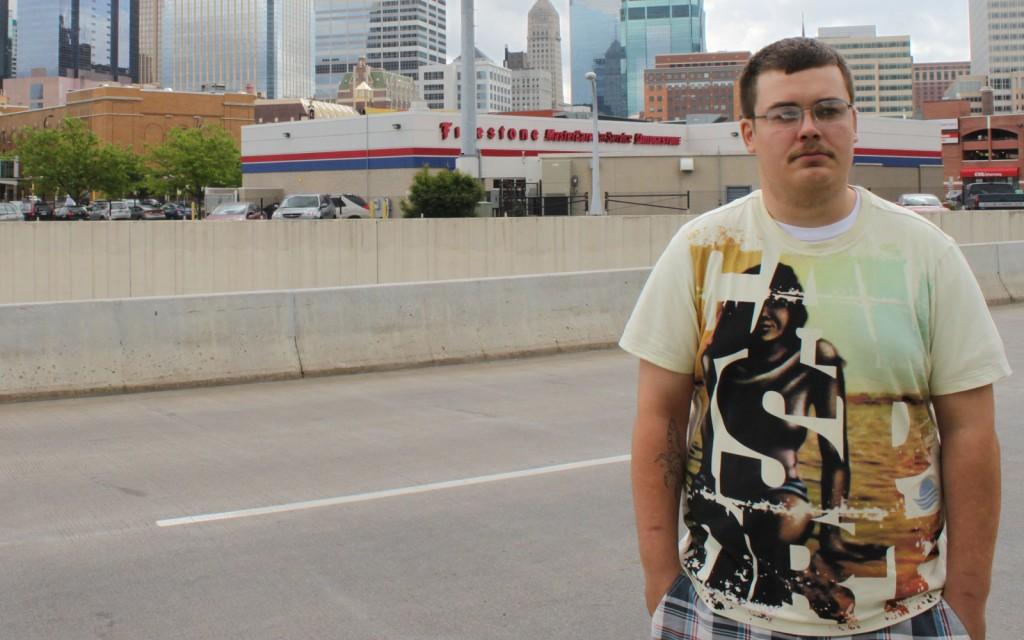
YouthLink accepts youth ages 18-23 in the morning with the focus of connecting them with job services and ages 16-20 in the afternoon to support these teens who are homeless but are often still in school.
Siddiqui touches on the necessity of keeping an open mind. “I cannot judge these kids by what they look like; we don’t have any idea what their circumstances are, have been, or could be,” Siddiqui said. Each case is vastly different––each youth has different trauma and different ways of coping with it. YouthLink’s variety of services helps meet the specific needs of each teen, whether it be coping with emotions through art, working with an adult to determine their course of action, or speaking with a formerly homeless teen about the emotional and psychological challenges that need to be overcome.
YouthLink focuses on providing a sense of community for homeless teens, who often lack this sense of belonging. “I feel like most importantly YouthLink gives you that environment of love, my first time coming here I felt like I was part of a family,” Corey said. Even though Corey now attends college and lives on her own, YouthLink continues as a supporting work environment for Corey who interns at the drop-in center.

Corey is a valuable asset to the YouthLink team, as she is able to connect on a more personal level with the homeless youth, coming out of a situation similar to theirs. “I have a lot of youth that still come to me, they give me new ideas, we brainstorm off each other…I guess I’m the middleman that helps them and the staff better understand each other,” Corey said.
The sense of unity in which Corey thrives is evident in many aspects of YouthLink’s programs. Each year, YouthLink holds a “graduation ceremony” for any youth who have graduated from high school or GED programs. YouthLink’s art gallery displays the work of many teens who find the best way to express and overcome their emotions is through art.
Located within Saint Joseph’s Home for Children off 46th and Chicago, the Hope Street emergency shelter works in conjunction with Catholic Charities of St. Paul and Minneapolis. Hope Street operates under a housing first model in order to give youth the amount of support that they need, in addition to partnering with school outreach programs to connect with counselors who identify couch-hopping youth, and joining with “Street Works” outreach to find teens who are homeless on the streets.
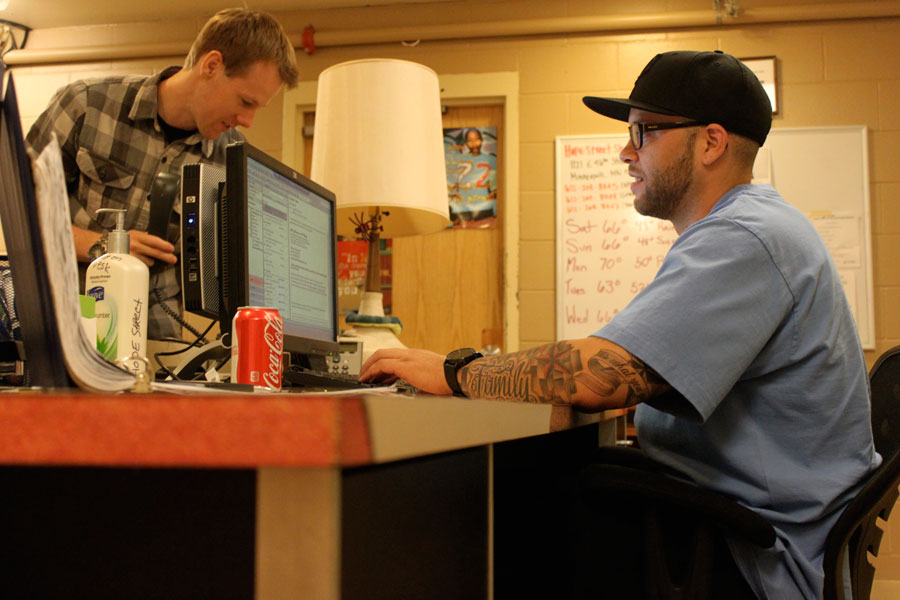
Trent Sowell found out about Hope Street when he was 18. “[It] was one of the major turning points in my life; without the services that helped me, I don’t know where I’d be today,” Sowell said, when speaking at a hearing at the state Capitol on April 5. At first, Sowell was almost kicked out of the shelter because he wasn’t showing up at night. He would come after school, shower, take a nap, then leave late and not return until early the next morning. His case manager approach Sowell about his nightly behavior before making him leave. Sowell’s grandmother was one of the victims of the tornado that hit North Minneapolis in 2011, and Sowell was going there in the middle of the night, every night. Though she was the one to kick him out, the one to put him on the streets, he could not leave her in her time of need.
In a similarly inspiring story, Kristan Clow proved the poverty cycle wrong. Though her father can’t read, Clow became the first person in her immediate family to go to college. “I realized that I wanted a better life for myself, I realized that I needed to do something different,” Clow said. That something different was education. “The only way I was going to be able to build my life and my career was through schooling,” Clow said. Clow continues her education in social work, determined to become like the adults who helped her break the pattern of generational poverty and homelessness. “There were teachers and social workers in my life that had really impacted me and changed my life, they planted seeds; they believed in me. It was those adults I wanted to be,” Clow said.
